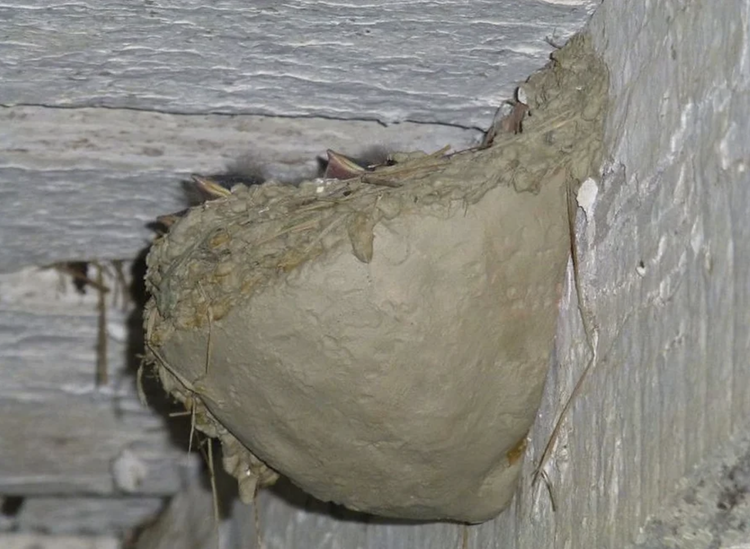Products
Swallow Conservation produces hand-built, artificial clay nests for Cliff Swallows and Barn Swallows. The nests are bisque fired, so they are breathable and as durable as dishware. Both Cliff and Barn Swallows are attracted to previous years’ nests, and if they can reuse nests it saves them energy that can be used for other breeding activities and for foraging. The clay nests mimic natural nests and the swallows readily use them, usually “finishing them off” by adding mud to the rims and lining them with grass. Additionally, the nests can be cleaned annually to prevent the buildup of external parasites, which also can benefit the swallows. In the case of Cliff Swallows, the artificial nests also prevents nests from falling, which can be a common problem in the northeast.
Cliff Swallow Nests
Cliff Swallow nests are hand-built, so no two are alike. Because of this they vary slightly in size, but the average dimensions at the base are 7 inches across and 6 inches high. They are designed to be installed under eaves, but can be made to fit other configurations. The front of each nest has a top and a bottom and is marked as such. There are screw holes on either side of each nest, and each one comes with screws and rubber gaskets for installation. After the nesting season, nests should be cleaned with hot water and mild soap using a stiff scrub brush then very thoroughly rinsed and dried. Cliff Swallows are extremely colonial; nests can be placed less than an inch apart. The placement of artificial nests and the number ordered depends on a variety of factors that can be discussed in a consultation.
Barn Swallow Nests
Barn Swallow nests are hand-built to fit a variety of situations inside a barn or other type of building. Barn Swallows often construct nests against the horizontal surface of a beam, but they also nest on top of a variety of surfaces. The nests we make the most often are designed for installation on a vertical surface, The average dimensions are 5 inches across and 5 inches high (because nests are hand-built they vary slightly in size). There are screw holes in the back each nest, and each nest comes with screws and rubber gaskets for installation. After the nesting season, nests should cleaned with hot water and mild soap using a stiff scrub brush then very thoroughly rinsed and dried. The placement of artificial nests and the number ordered depends on a variety of factors that can be discussed in a consultation.



